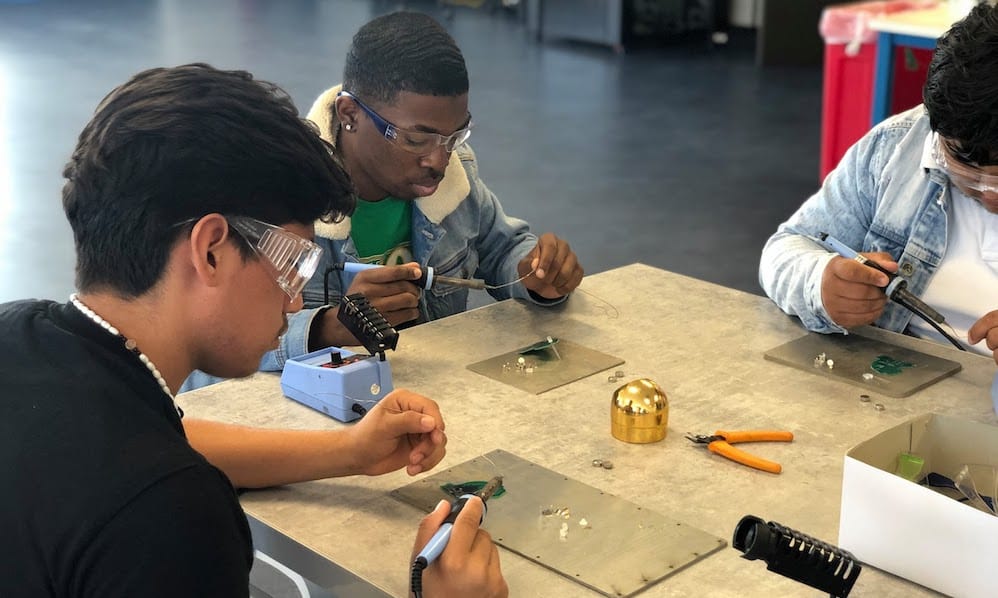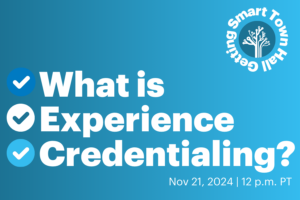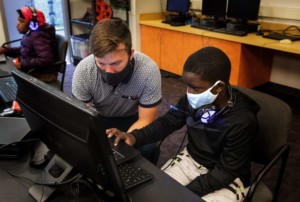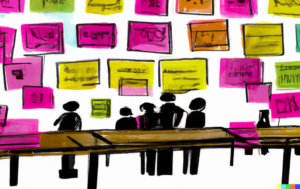The Power of Tapping Academic Communities for Tomorrow’s Workforce Needs

By: Dr. Jan E. Odegard
From external forces like new technologies that reshape workflows and redefine professional roles, to internal factors like the individual leadership styles and workplace cultures that characterize an organization, the way we work is constantly changing. This makes it critical for people to be adaptable and flexible, which begins with education.
While a standard four-year college or K-12 school can provide students with the foundation for a career and the skills to roll with punches, education doesn’t end there. To keep up, students must continually enhance their skills to succeed—and that’s where an academic community comes in.
Intended since their inception to help students build, share and apply knowledge, academic communities are adapting to society’s changing needs without losing sight of these foundational purposes. Today’s academic communities must encourage both students and lifelong learners to enhance their skills and expertise so they can prosper in the long run, ensuring a successful future for the city in which the community is located.
This means these communities must collaborate with city leaders to create a workforce development program that embraces different backgrounds, taps into the “DNA” of the region, city, or community that it serves, and looks to beneficial partnerships for additional support.
Embracing different backgrounds
To evolve from traditional ways of thinking, academic communities must foster diversity by embracing all types of academic backgrounds, genders, races, ages, and experiences. Diversity leads to new ideas, which in turn fosters innovations that can further benefit the wider community and reflect a flourishing learning environment.
This means avoiding the “one-size-fits-all” mentality and recognizing that not every job requires a four-year degree is a key to understanding how to shape the future workforce. For example, a CEO with a GED might have a different (even better) idea on a new leadership program than an international Ph.D. student. Academic communities must understand that not all companies are looking for people with degrees, but rather people that will bring new ideas.
Embracing differences, and ensuring multiple perspectives and backgrounds are represented, helps an academic community bring city ideas about how it can improve. For example, The Ion, an innovation center designed to bring together entrepreneurs, corporations, and academic institutions for collaboration in Houston, houses the Ion Smart Cities Accelerator, which is a program that brings together entrepreneurs of all types of backgrounds to create innovations that will enhance the lives of Houstonians.
There is an opportunity for a city to reciprocate as well. A city’s ability to support and foster academic learning communities will be key, and the cities that do this the best will have the greatest impact on transforming a population to adapt to and embrace new opportunities.
Using Houston as an example for building on its DNA of the energy industry, The Ion has a critical role to play. The energy industry worker of yesterday is not the energy industry worker of tomorrow. This is not only true because of the digital transformation of the industry, but also because of the global energy transition – and the opportunities that accompany this are rich, diverse, and increasingly high-tech and digital. The Ion will not only serve as an epicenter for startups but also as a hub for the collision of ideas, people, startups and corporations. The Ion’s programming will span a wide range of academic partners and will create opportunities for these collisions to not only drive new technology but to prepare for tomorrow’s workforce.
Tapping into a city’s DNA
To create a successful workforce program, academic communities must embrace and support the industries relevant to a city.
For example, Houston is known for its booming energy industry, which brings in thousands of jobs each year. Through an academic community providing additional education, training, and certification courses specifically for these jobs, Houstonians have the ability to pursue new opportunities, further growing the energy industry. Especially as the industry continues to digitally transform, businesses rely more and more on academic communities to adapt to growing educational and training needs.
Look for partnerships
In order to access untapped potential, academic learning communities must partner with academic networks and local businesses to expand their reach both within and outside of the community.
Learning communities can benefit from the expertise and support of local academic institutions, businesses, and organizations. These partnerships can support and even strengthen academic communities, resulting in improved program quality, more efficient use of resources, and better alignment of goals and curricula.
Partnerships don’t start at a collegiate level either—K-12 programs also serve as a gateway in tapping tomorrow’s workforce potential. As an example, The Ion includes programming that targets Houston’s youths and underserved high schools based throughout the community. In this program, the Ion launched its first Innovation Challenge cohort, which is a one-semester elective class consisting of 60 students from four community high-schools. The 50-hour program requires that students meet weekly to develop STEAM skills, design-thinking, creativity, and high-performance collaboration, communication, and self-confidence skills that will set them up to succeed in future educational endeavors and their careers.
“Fostering collaboration and strategic partnerships is fundamental to improving not only a students’ success but the future workforce as well,” said Jesse Bounds, Director of Innovation, City of Houston. “Companies are always on the lookout for new talent and the next best idea, and by initiating introductions and strengthening relationships, we’re not only able to recruit new talent, but learning communities will support our ability to retain and empower tomorrow’s workforce.”
By joining forces with a corporation, academic communities can provide students access to emerging technology to better prepare them for the workforce. Along with sharing knowledge in new markets and verticals, businesses also provide the community with networking and workshopping opportunities. In turn, students and lifelong learners become better prepared for potential internships and job training that businesses may provide.
Partnering with and implementing platforms can also support student education by providing them with the right tools to learn and succeed. Students are often faced with financial concerns, especially when it comes to purchasing expensive textbooks. To help combat this and lower the education barrier, Rice University created OpenStax, a nonprofit education initiative that provides students with high-quality, free textbooks. Along with this, Rice University researchers also developed an OpenStax Tutor, which is a platform that provides lifelong learners with easy-to-use online courseware and the learning tools they need to complete their courses.
With new programs, platforms, and partnerships, academic learning communities not only create relationships and opportunities for students but also power the greater learning community outside traditional academic communities.
Building the future
While an academic community’s main focus should be on providing its students and lifelong learners with the best tools needed to achieve their goals, keeping in mind the greater learning community and the city itself will play a role in its success, which can be defined as how well students are prepared to lead tomorrow’s workforce. Local academic institutions, businesses, and the city itself rely on the success of the academic community and its workforce program, and vice versa, in a symbiotic relationship.
Each city or region that houses these academic communities has a role to play in the greater learning community. By supporting these communities, cities can directly engage and influence their region’s future workforce—ultimately driving their prosperity.
For more, see:
- Like The Ion is in a renovated Sears building in Houston. Crosstown Concourse is a successfully renovated Sears building in Memphis that includes a high school. See Crosstown High: Innovative Memphis School in a Vertical Urban Village
Stay in-the-know with innovations in learning by signing up for the weekly Smart Update.
Dr. Jan E. Odegard is the Senior Director, Industry and Academic Partnerships at The Ion. You can find him on Twitter at @jeodegard.






0 Comments
Leave a Comment
Your email address will not be published. All fields are required.